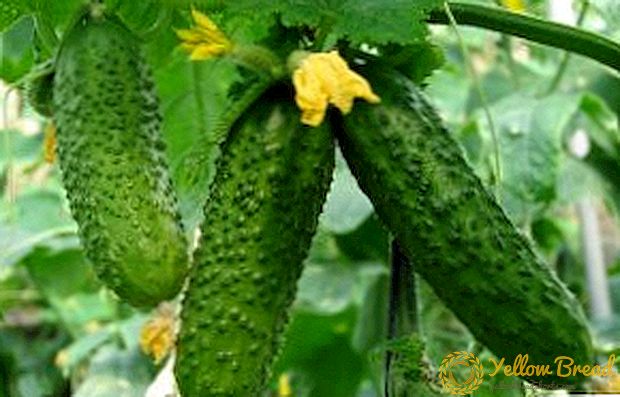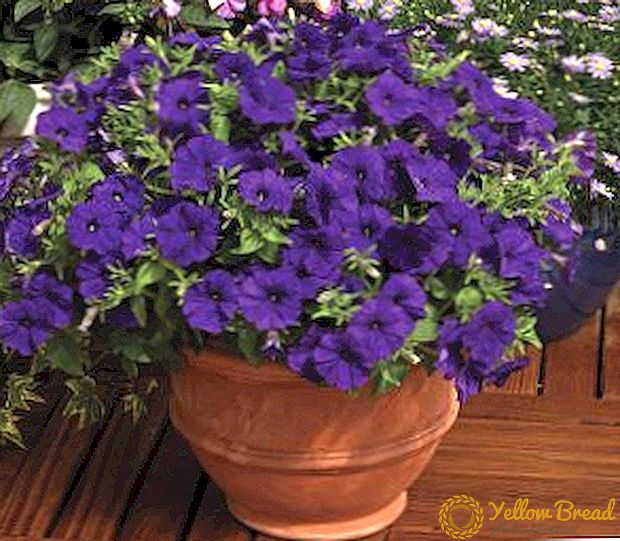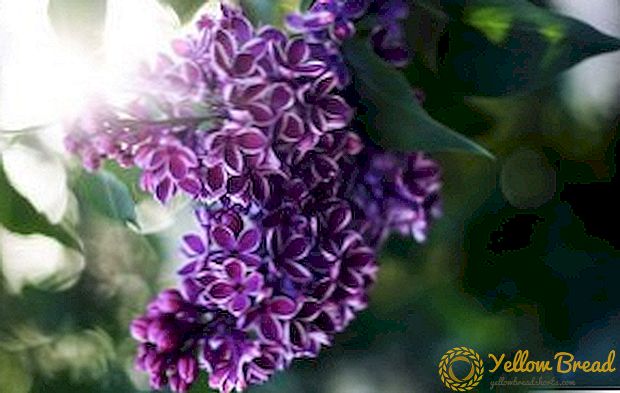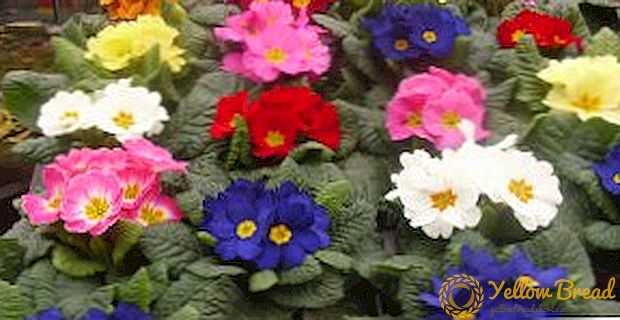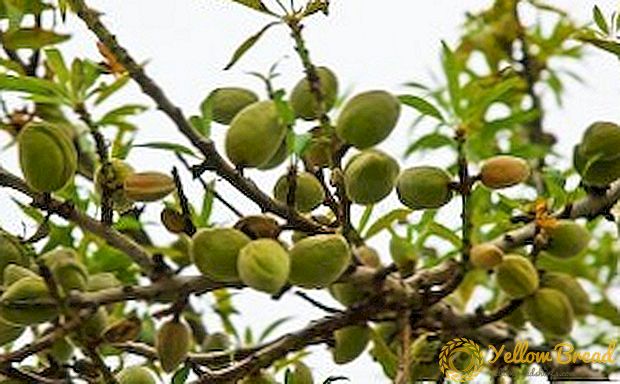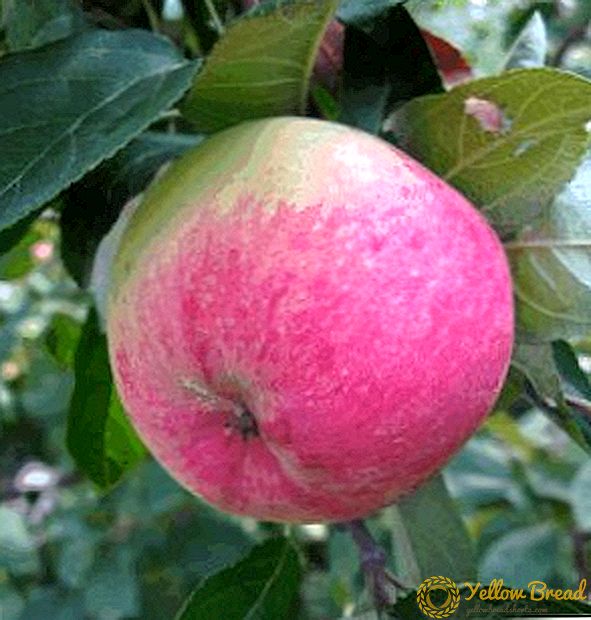 Apple tree "Moscow pear" is considered one of the oldest cultivated varieties that are grown in country houses and in village gardens, this article is devoted to its description and secrets of cultivation.
Apple tree "Moscow pear" is considered one of the oldest cultivated varieties that are grown in country houses and in village gardens, this article is devoted to its description and secrets of cultivation.
This variety appeared by natural breeding and is not grown for commercial purposes.
- Characteristic: the pros and cons of the variety
- Features of growing
- Landing spot
- Soil requirements
- Landing technology
- How to choose the seedlings
- When to plant a variety
- Landing process
- How to care
- How to water the fruit tree
- Soil care
- Feeding the apple
- Pruning varieties
- Breeding features
- Harvesting and Storage
- How to prepare an apple tree for winter
Characteristic: the pros and cons of the variety
The tree has a branched crown and very branchy branches, rather dense foliage. Fruits are small or medium in size, have a spherical, slightly flattened shape.
The advantages of apple varieties "Moscow pear" include:
- frost resistance - can withstand temperatures up to -50 ° C;
- early variety - fruits ripen by early August;
- high yield;
- fruiting for 5-6 years after planting;
- high content in fruits of vitamins of group C and B, pectins.
 Despite the large number of positive qualities, this variety has its drawbacks:
Despite the large number of positive qualities, this variety has its drawbacks:- apples are not suitable for long-term storage;
- trees do not tolerate drought;
- susceptibility of apple scab;
- fruit ripening on one tree is uneven.
Features of growing
Apple tree of this variety is quite unpretentious, because originated naturally, and not by artificial selection. However, to get a good harvest, you need to follow certain rules.
Landing spot
An important factor is the choice of landing site. It is desirable if it will be some kind of elevation. Otherwise, you need to organize the drainage: the tree does not like an excess of moisture. It is also recommended to choose a sunny place. 
Soil requirements
The most suitable soil for the “Moscow pear” is slightly acidic, preference is given to soddy soil, super sandstone or chernozem.
Landing technology
In order for the Moscow Pearl to take root normally and eventually give a good harvest, it is necessary to follow certain rules of planting and growing, as well as to take a responsible approach to the selection of seedlings.
How to choose the seedlings
Before buying carefully inspect the seedling, the trunk should be smooth, without flaws. Also pay attention to the root neck, and more precisely, to a slight bend in the area. It has a prolonged wound - a trace from the stock. If this wound is not healed, it is highly likely that the seedling is affected by the fungus. 
When to plant a variety
The optimum time for planting seedlings is the end of April or the first half of autumn. At a later time, night frosts may occur, so if you do not have time to land, it is better to postpone this business until spring.
Landing process
A hole under the sapling is dug not less than 70 cm deep and about 1 meter wide. Three days before landing, humus is placed at 1/3 of its height, and mineral fertilizers are added. Then the mixture needs to be loosened, fill the ground and form a tubercle.
How to care
In the first year after planting, 80 to 100% of the flowers are removed from the tree, thus the probability that the tree will take root is much increased.
How to water the fruit tree
For good growth, the apple tree must be watered up to 2-3 times a week during dry periods. It is preferable in the evenings by sprinkling. Before watering the ground around the trunk should be loosened. It is recommended to pour out about 30 liters of water at a time. Watering is stopped by the end of August, so that the tree will slow down growth and start preparing for winter. 
Soil care
Around the tree should definitely equip tree circle.It is necessary from time to time to loosen, weed from weeds. Do not plant in this area any other plants, it can be separated curb tape.
Feeding the apple
In the spring it is recommended to feed trees with mineral and organic fertilizers. Nitrogen fertilizer is better to make in the summer after the fruit ovary. Fertilizers are applied about four times per season according to the following schedule:
- end of April;
- before flowering;
- during the ripening of the fruit;
- in the autumn, after harvest.

Pruning varieties
Pruning of trees is carried out in order to form a crown, remove dry branches and increase the number of fruit-bearing ones, as well as preparing the tree for wintering. Pruning is carried out in autumn and winter. Place slices treated with garden pitch.
Breeding features
Variety "Pear" is considered to be self-productive, and for the fruit ovary in the garden there must be trees of another variety. Optimal pollinators are Anis Striped, Bellefle-Kitaika, Antonovka, Korichnoe and Papirovka.These varieties should grow no farther than 60 meters from the “Pear”, in which case the bees can easily carry pollen from one tree to another.
Harvesting and Storage
"Pear" refers to the early varieties of apple trees, and the crop is harvested in August. It is better to pick off slightly immature fruits, because overripe quickly fall off and deteriorate. Shelf life is very short - about 2-3 weeks, so the fruit is better to immediately start processing. 
How to prepare an apple tree for winter
The “Moscow pear” is considered to be a frost-resistant variety, however, to protect the tree from early frosts or a snowless winter, the tree trunk is mulched with humus and the trunk is wrapped with textile material (it must pass air).

